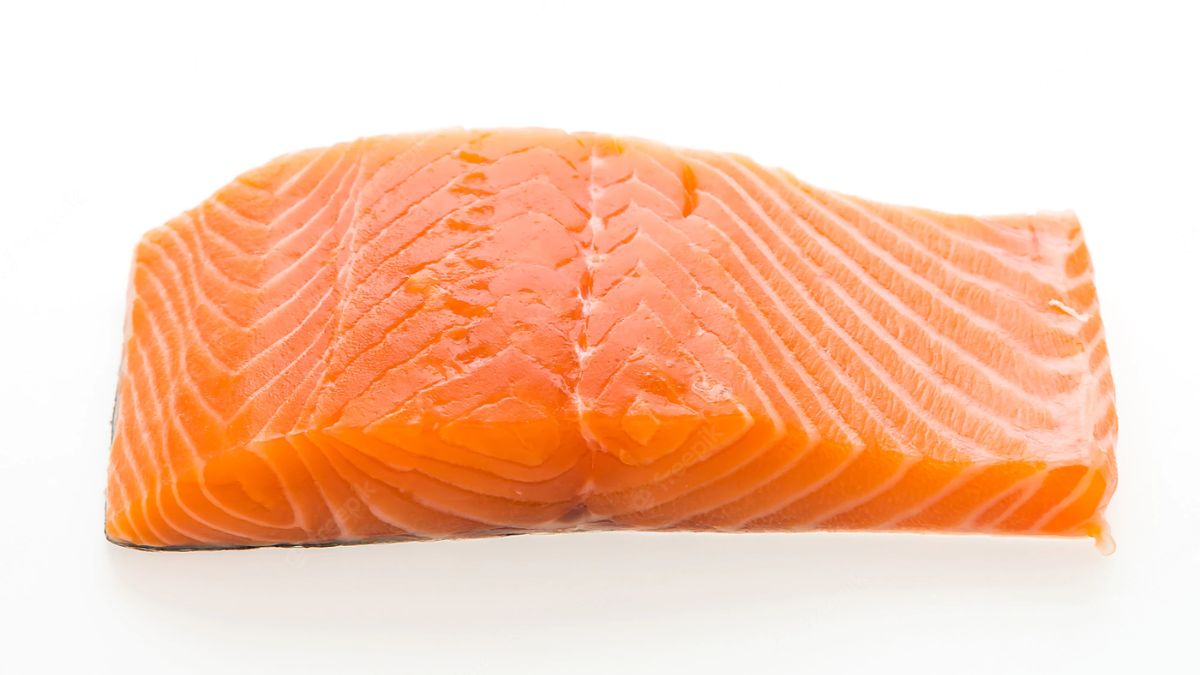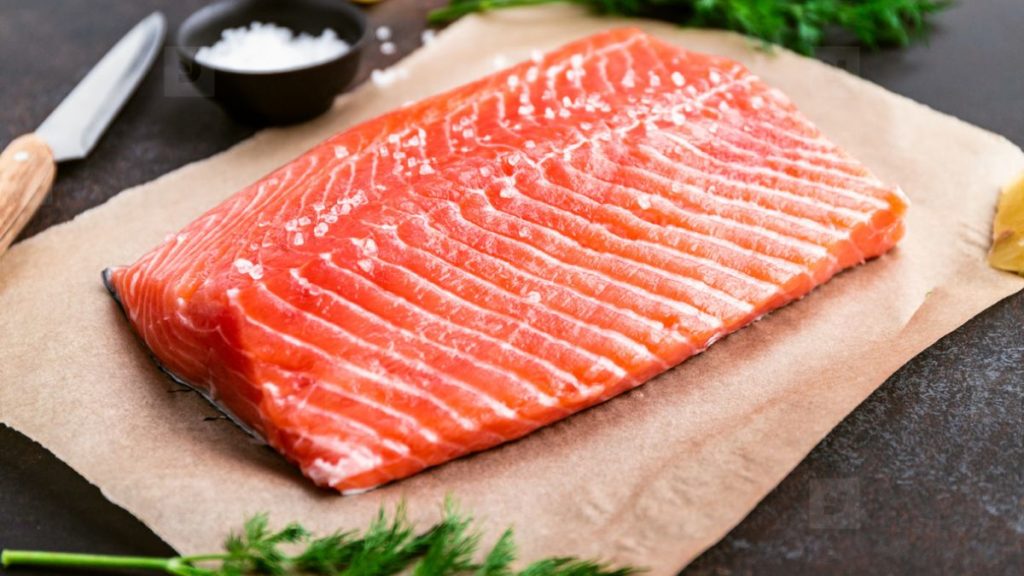You can eat raw salmon as long as it has wrinkles and no bruising. This salmon does not contain any contamination from environmental pollutants or human waste. However, raw salmon may contain several viruses that harm the human body. Raw seafood contaminated with human waste contains these viruses, so purchasing seafood from clean waters is crucial. Salmon can also carry Japanese tapeworms, which grow up to 30 feet long in human bodies.
What is Raw Salmon?
Raw salmon is salmon that has not been cooked but has been prepared well. These fish look like other freshwater fish because they have scaly gray-silver skin and a fleshy red-orange body. Salmon live in rivers that flow into the Pacific and North Atlantic oceans. Raw fish has been considered a treat in many parts of the world because it has a smooth texture and is good for your health. But you can’t eat raw fish from every kind of fish.
Can you Eat Raw Salmon?
Yes, it’s also delicious.
But that doesn’t mean you can waltz down to the river, karate chop a salmon, and eat it like Gollum. Bears might like it, but it could make you sick.
But let’s be honest: you probably won’t get your salmon right out of the water. Most people buy it from the cold section of their local store, which lowers the risk of stomach problems even more. If you store and cook salmon correctly, it is safer to eat raw than almost any animal protein. But you can still get sick from bacteria, parasites, and other things that can make your body sick.
Raw salmon is the main ingredient in many dishes, like sashimi and gravlax. Cooking the salmon in these dishes would pretty much ruin them. It would also be disrespectful to the local food culture, especially when it comes to sushi. Still, it’s important to know that raw salmon may have parasites, bacteria, and other toxins that can be harmful even in small amounts. If your immune system is weak, you shouldn’t eat raw salmon. Only eat raw salmon that has been kept and cooked correctly.
Dangers of Eating Raw Salmon
Although many people enjoy the taste of raw salmon, some potential dangers are involved. Eating raw salmon can harbor harmful bacteria, parasites, and pathogens from its natural habitat. For your health, the best way to prepare it is to cook it until it reaches a temperature of at least 145 degrees Fahrenheit. Even if you can find fresh, raw salmon in the grocery store, you should still cook it thoroughly.
Some people worry about the safety of eating raw salmon because it can harbor helminths (wormlike organisms). Some raw fish harbor broad tapeworm eggs, which can grow up to 12 meters inside the human digestive tract. Other types of tapeworms can also live in raw salmon, and salmon from Japan and Alaska is likely to contain other kinds of pathogens. Luckily, salmon is packaged using blast-freezing methods that make it safe to eat.
What does Raw Salmon Taste Like?
Raw salmon has a smooth, buttery flavor that can’t be found in any other food. When you take a bite of fresh raw salmon or salted butter, both melt as soon as they reach your mouth. Salmon tastes different depending on where it comes from, how it’s cooked, the time of year, and other things. People have noticed that wild-caught salmon tastes better and lasts longer than farm-caught salmon. Different kinds of salmon live in different bodies of water. Each has its specialty, but its tastes don’t vary much. Some of these are Chinook, also called King salmon, silver, pink, and red salmon, and Salmo Salar also called Atlantic salmon.
Who can’t Eat Raw Salmon?
The possible pathogens in raw salmon can pose a big risk if you are:
- pregnant
- a child
- an older adult
- immunocompromised
- receiving treatment for cancer
- a person with liver disease
- a person with a positive HIV diagnosis or who carries the virus
- carrying a transplanted organ
- living with diabetes
People whose immune systems are weak or not fully developed can die from infections that most people can handle with nothing more than an upset stomach (as in the case of children and fetuses still enjoying that womb life).
How to Store Raw Salmon?
As with all foods, you are storing raw salmon is very important if you want to keep the risk of stomach problems to a minimum.
It’s important to store your raw salmon at the right temperature. Still, that’s what fridges are for. If your fridge isn’t broken and you can keep things at 40°F (4°C) or below, you should be fine keeping your salmon there. Once it’s in there, you should eat it within one to two days.
Raw salmon can also be frozen. If you like to wait, you can put raw salmon pieces in a vacuum-sealed freezer bag and keep them for up to three months. Depending on how much you’ve frozen, putting it in the fridge for 24 hours should be enough to defrost.
Bacteria don’t just hang out in one spot; they can also spread to other foods. So, keep your other food away from the salmon and keep the salmon in a sealed container, so it doesn’t touch the other food in the fridge.
How to Clean Raw Salmon?
Salmon is no different from other animal proteins regarding whether or not you should wash them before cooking them. The debate seems to be between anecdotal evidence (“You should always wash your fish and meat.”) and real science (the USDA and food scientists say that rinsing animal proteins doesn’t kill bacteria but can increase the risk of cross-contamination).
If you skinned the salmon yourself, you might want to give it a quick rinse to eliminate any loose scales or other bits. If you want to rinse raw salmon, use clean, cold water. When it is warm, the salmon slices turn into a microbial orgy. The best thing to do is put salmon that has been washed back in the fridge before you serve it. This can help ensure that any pathogens the salmon might have picked up while being rinsed don’t start to grow.
Can you Eat Undercooked Salmon?
Nope. Salmon is mostly safe to eat both when it is cooked and when it is raw. But what about salmon that’s in the middle? That’s grade-A danger flesh.
Please ensure the salmon’s center is at least 145oF (63oC) when you cook it. Most bacteria, viruses, and other pathogens do well at temperatures between 40 and 140 degrees Fahrenheit (4 and 60 degrees Celsius). So, your raw salmon stored in the fridge is probably too cold for bacteria to grow. Cooked salmon is way too hot. Salmon that isn’t cooked enough is a breeding ground for bugs. It would be best not to eat it.
How to Spot Salmon that’s Gone Bad?
When you eat raw salmon, there is always a small chance of getting sick. But this risk is much higher if you eat bad salmon.
The good news is that it’s pretty easy to tell the difference between bad salmon and fresh salmon that probably won’t make you sick with salmonella. Here are a few warning signs:
It doesn’t Smell Good
Any other food that smells like fish is bad. But if you’re sniffing fish, the smell you want to smell is fishiness. You don’t want to smell something like skunk or ammonia. If you open the package and get a smell that makes your nose hair curl, throw out the salmon.
Salmon’s natural fishy smell isn’t very strong compared to other fish (unlike mackerel, which reeks of the sea). If the fishy smell of your salmon is a little too strong, you might want to avoid it.
It looks Gray
The color of raw salmon is reddish; it doesn’t turn pink until it’s cooked. Salmon with grey skin has gone bad. Salmon with a milky, slimy film on it is also not safe to eat. Your salmon is also bad if it has dark spots or mold. Also, don’t eat food that has mold on it.
It doesn’t Feel Like Raw Salmon should
Use your fingers to give your salmon a little touchy-feely care. Salmon is risky if it feels slimy or falls apart when you touch it. Salmon should be moist and firm, unlike shredded pork, which is slimy and wet.
Conclusion
Many people eat raw salmon. But raw salmon that hasn’t been frozen may have parasites. It could also have bacteria that won’t die from being frozen. You kill bacteria and parasites when you cook salmon to 145 degrees Fahrenheit on the inside.
Raw salmon has a buttery taste that is hard to miss and is said to melt in your mouth. It doesn’t have the salty taste of the sea that most raw fish does. Raw salmon is also described as having a simple but unique flavor that is fresh and smooth.
Raw salmon has a buttery, smooth, and creamy texture that doesn’t last long in the mouth. Some raw fish, like salmon and tuna, are soft because their muscles don’t get as much work as those of animals living on land.


